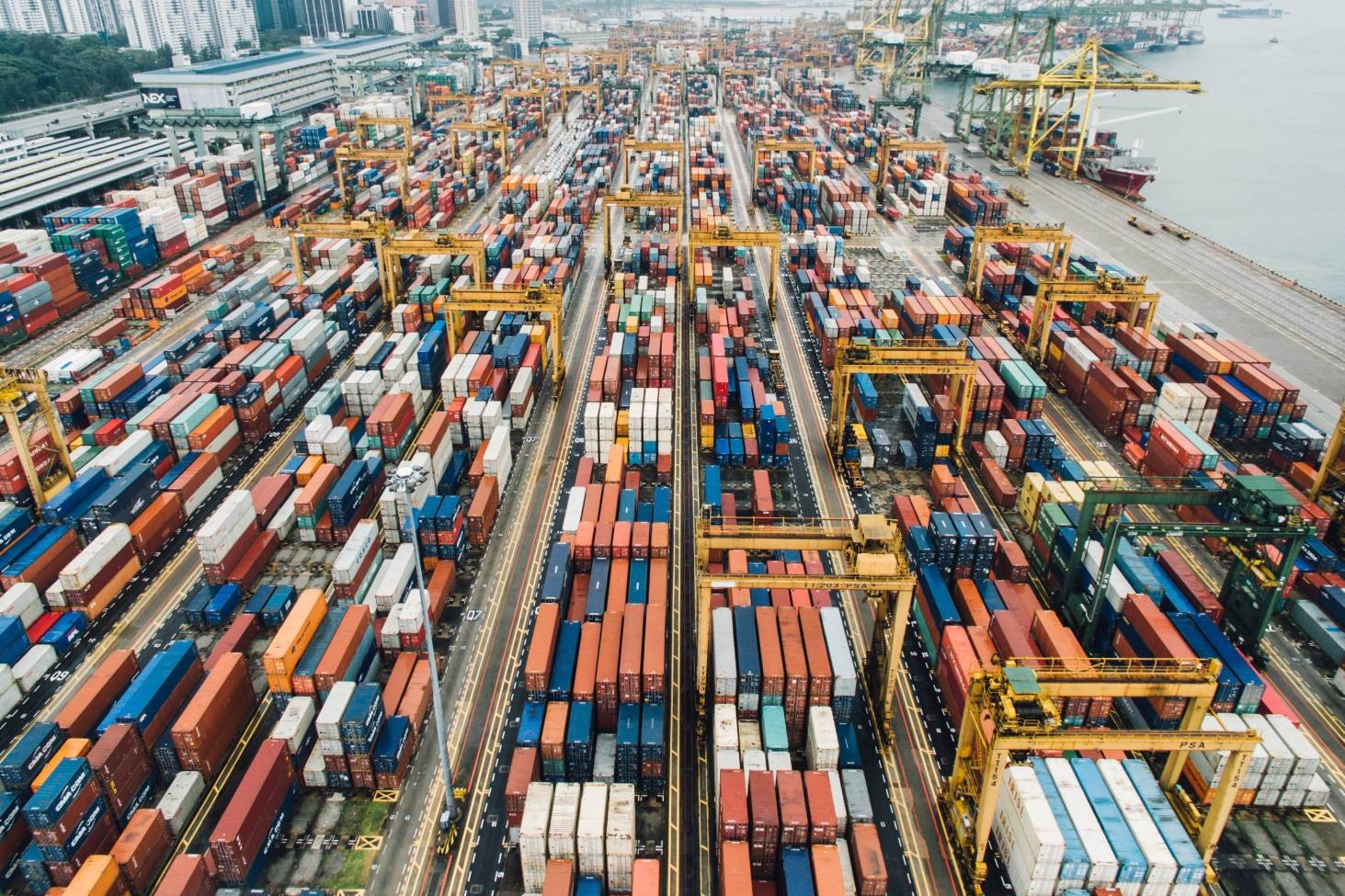
Keep investing in logistics infrastructure structures with focus on the field of transport and key economic zones, which will basically help the cut of logistics costs
There should be more deep-water ports to be built serving cargo transport in Asia, Northeast Asia, Europe and America. Current capacity of Vietnam’s seaport system is about 550m tons of cargo pa. The amount of cargo-through-port in 2019 was 655m tons, including 19.346m TEUs of container cargo- an average annual increase of 10% - 14%. Many vessels had to do steverdoring work at buoys. When commitments of new-generation FTAs are fully implemented, especially EVFTA, CPTPP and RCEPT, the amount of cargo through-port will quickly increase.
The construction of the North-South Expressway should be speeded up, which will help shorten the time of North-South transport. Traffic systems connecting the Mekong Delta - HCMC - Ba RiaVung Tau, especially with Cai Mep Ha Logistics Center and deep-water ports, should be improved. There are only 40km of expressway in the Mekong Delta out of the total of 1,000km of expressway nationwide.
The North- South high-speed railway should be invested and local waterways should be improved as well, with focus on ports and means of stevedoring. These two means will help the changing of transport methods from road transport. The use of railway transport for fresh fruits exported to China will help cut procedures at the border and lower transport costs.
Logistics service centers serving economic developments and regional import-export should be developed, especially for the Mekong Delta, HCMC and Hai Phong. Together with the regional logistics centers, regional ICDs of large scale near sea ports should be built as well.
A logistics center for the Mekong Delta at Can Tho city should be developed, which will consolidate cargo for export transport and make good use of means of transport. And there should be irradiation devices at the logistic center (not having to transport vegetables and fruits to HCMC for irradiation, which causes higher cost) and specialized inspection… to avoid damages causes by loading and unloading many times and to save time and logistics costs. Can Tho Airport should be used for frozen food, exported vegetables and fruits for direct consuming or going through Tan Son Nhat Airport as transshipment, which will limit damages after being harvested and cut logistics costs to minimum level.
Cold warehouses and cold supply chain serving local production and consumption, and export of aquaproducts and agriculture products. Currently, there are 48 coldwarehouses nationwide with the capacity of around 600,000 pallets, including 36 warehouses in the South, 11 warehouses in the North and only 1 in the Central. There are over 700 cold trucks and 450 cars for transporting containers of cold cargo. Cold supply chain brings practical benefits in cutting costs of production, logistics, limiting damages to supply chains of perishable cargo- Average loss rate currently is high- which can be up to 35% - 45% and around 25% - 30% to aquaproducts and seaproducts. However, unsynchronous cold warehouse planning in the country only meets around 30% - 35% of the requirements, mostly serving import-export, besides serving the local market.
Developing and making good use of cold bounded warehouses will cut logistics costs for import- export cargo. This is one of logistics activities that needs invesments both in terms of infrastructures and legal regulation adjustments. Local and foreign enterprises providing logistics services have paid much attention to the used of cold warehouses and cold bounded warehouses and wished to have improvements in terms of policies and structures: (1) electric price policy for warehouses. Currently, electric price for warehouses is 25% - 30% higher than that for frozen goods production, electricity costs for warehouses account for 30% - 35% of the production prize, resulted in high costs in import-export frozen product and local consuming products. The price should be lowered fro lower logistics costs.
Improving works of digitalization in logistics activities, applying block-chain technology and artificial intelligence, carrying out e-DO and e-B/L, and seaport, transport management systems… developing an axis basis of existing technology applications to serve the community providing logistics services and the community of shippers. The use of digitalized technology will help cut logistics costs, especially developing Vietnam’s Agro-logistics.
Boosting cooperation among shippers and logistics service providers in choosing means of transport and schedule
Changing method of buying and selling import-export goods: currently, around 91% of our goods exported is in form of FOB and imported in form of CIF. Services of transport abroad and insurance are decided and carried out by foreign customers. They have had close relationship to transnational corporations that can manipulate logistics activities and costs.
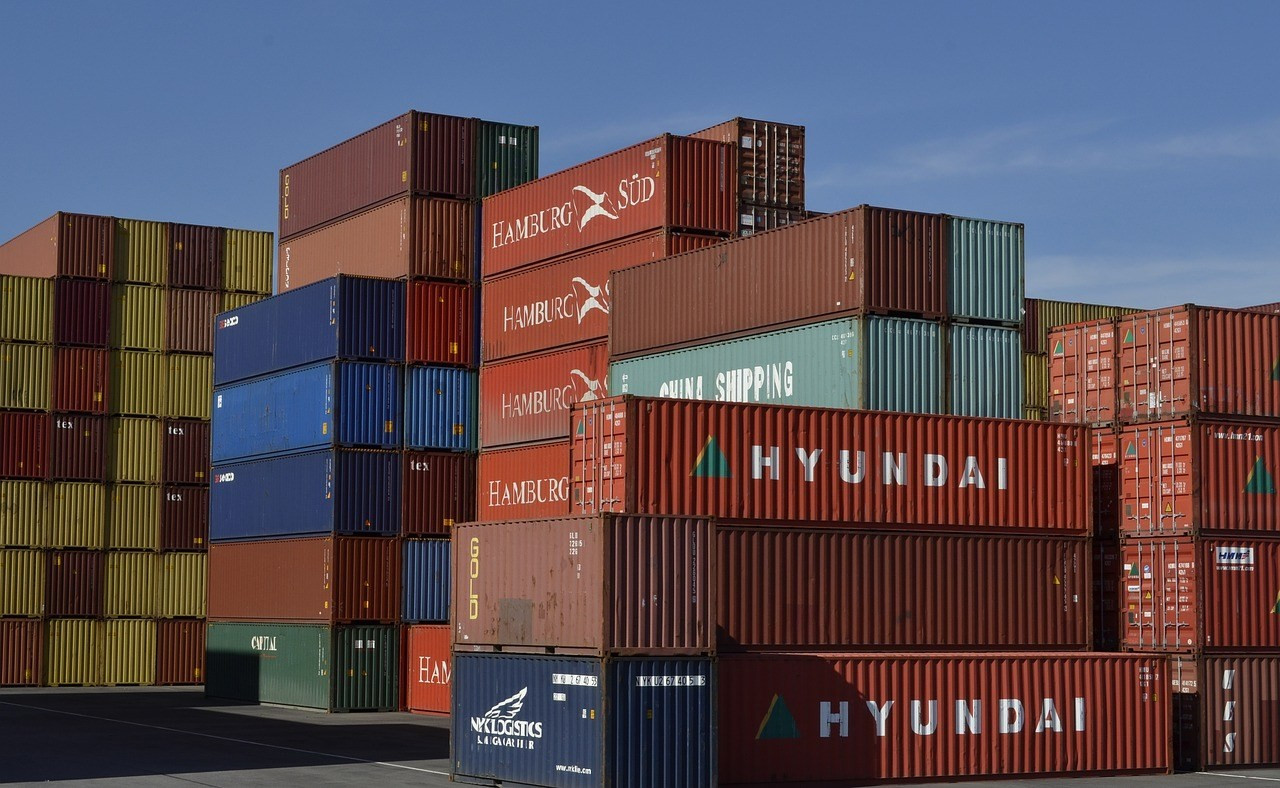
From the position of the Government, we cannot collect foregin exchange from that logistics providings and Vietnam’s import-export enterprises have no active roles in hiring vessels and buying insurance. Therefore, Vietnam’s enterprises of production and import-export should actively choose a more suitable form of buying and selling. And on the basis, logistics service providers can give consultancy on choosing modals of transport, shipping companies and transport cost negotiation for they already have good relationship with them, which will improve competition abilities thanks to long-time logistics cost cut.
There should be cooperation among shippers and logistics service providers: logistics service providers can make offers of cutting logistics costs for enterprises of production, importexport and distribution. For example, according to a report in the conference Cutting Logistics Cost- An Optimal Solution to Improve Vietnam’s Agricultural Value Chain on July 9th: Freight for a 40-ft cold container from HCMC to Hanoi is around VND 80,000,000 in the time of 3 days. Ratraco-a railway transport company, a VLA’s member- provides 40- feet cold container transport with 2 trains/week (Wednesday and Sunday) with the freight of VND 27,000,000/container of fruit and goods stored in cool temperature. The trains depart from Trang Bom Station, Dong Nai to Yen Vietn, each train can carry 19-20 40-feet cold container. The time is 3 days. The freight if they are transported to Hanoi will be VND 14,300,000/a 40-feet cold container (the freight is VND 8m/a 40-ft container from Saigon Port to Hai Phong Port, plus VND 4.5m for trucking from Hai Phong to Hanoi and the freight of VND 1.8m for stevedoring- 4-day time of transport).
Besides cutting cost remarkably, transport by seaway and railroad also helps reduce load and increase safety for road traffic.
Improving 2-way road transport and urban transport
The road transport market has not been transparent with the lack of information and high freight due to the fact owners of means of transport do not work directly with shippers: they have to go through many intermediaries; work efficiency is low and the ratio of empty travelling is high. The connection among shippers and means of transport owners or logistics service providers is not good enough so that they are unable to find an optimal modal o transport to reduce logistics costs. To make good use of two-way transport, there should be a reputable transaction floor run by a competent management agency to be set up.
Authorities need to study to reduce the number of BOT stations and reduce costs for each station to avoid the cost of enterprises increasing many times. Collecting tolls in form of electric toll collection should be improved to reduce congestions and save traffic time.
Congestions and city regulations on specified hours that trucks are allowed to carry goods to cities affect traffic flows and cause transport delay, which result in increasing operation costs to logistics transport providers, especially in HCMC and Hanoi. Transshipment areas should be considered to be set up for urban forwardings.
Reducing sea-way charges and surcharges
Besides reducing road transport costs, reducing of seaway charges and surcharges is significant in cutting logistics costs nationwide for 90% of our import-export is transported by seaway.
Foreign container shipping companies are currently imposing high charges and surcharges to import-export cargo beside freight at Vietnam’s seaports- a burden that make logistics costs on cargo transported by sea way increase. Similar to sea freight, charges and surcharges are a little differential among shipping companies.
Although foreign container shipping companies collect high THC surcharges, they give back to ports only 30% - 40% of surcharges collected from their import-export customers. It is suggested that the State’s management agencies on sea transport and charges should not allow foreign container shipping companies to increase THC surcharge and other- showing State’s management tool is an important factor in cutting national logistis costs.
Studying and applying technology, developing logistics service on the basis of digitalization
Survey in 2018 by the Vietnam Logistics Business Association (VLA) showed application of sciencetechnolgy in Vietnam was not high, most of them were single solution. Around 40% of information technology application currently apllied at logistics enterprises are basic ones as international forwarding, warehouse management, transport management, e-data exchange and customs declaration (being applied most at 75% - 100%). Not many enterprises use highly integrated solutions. However, large enterprises successfully applied technological solutions that brought up efficiency in logistics service and significantly cut related costs as.
» Electronic por- ePort- and electroni Delivery Order- eDO- at Saigon Newport: ePort helps the Port’s customers and shipping companies reduce stages of moving, receiving orders, paper manual management, working process electronicization, strictly control of documents, forwading documents and payment. Besides, it is able to reduce congestions when the amount of forwarding cargo is large and to reduce 2/3 the number of staff working in the procedure area. Currently, most of shipping companies implement eDO, nearly 100% at all port system of Saigon Newport.
» Applying total solutions in logistics services (Cargowise): Cargowise is a comprehensive total technology solution. This solution is currently being used by more than 12,000 companies in 150 countries with more than 30 languages, including 25/25 forwarders and 40/50 largest logistics companies in the world (according to the ranking of Armstrong Associates, October 2019). With a single solution, all businesses’ activities, including logistics services such as forwarding, customs, shipping lines, agents, CFS, warehouses, transportation, delivery and e-commerce, geographic compliance, location tracking, and various functional departments and departments such as business, CRM, pricing, accounting, personnel work, workflow, documents, eDocs... are all processed and centrally managed on the cloud platform)... Solutions to help businesses improve logistics services, well control services, getting ready for entry into the global supply chain, significantly reducing logistics costs.
» VLA and VIDA are cooperating to establish a community company to develop a digital platform integrating existing logistics technology to serve logistics service providers and manufacturing, import-export enterprises in daily business. This platform will apply Block-chain technology and other technologies. The first product is the eDO for container LCL and e-Bill of Lading...
Innovating administration procedures, facilitating trade
Currently, the ministries and branches have made positive changes to implement specialized inspection services towards the direction of electronicization, facilitating enterprises especially in import and export activities.
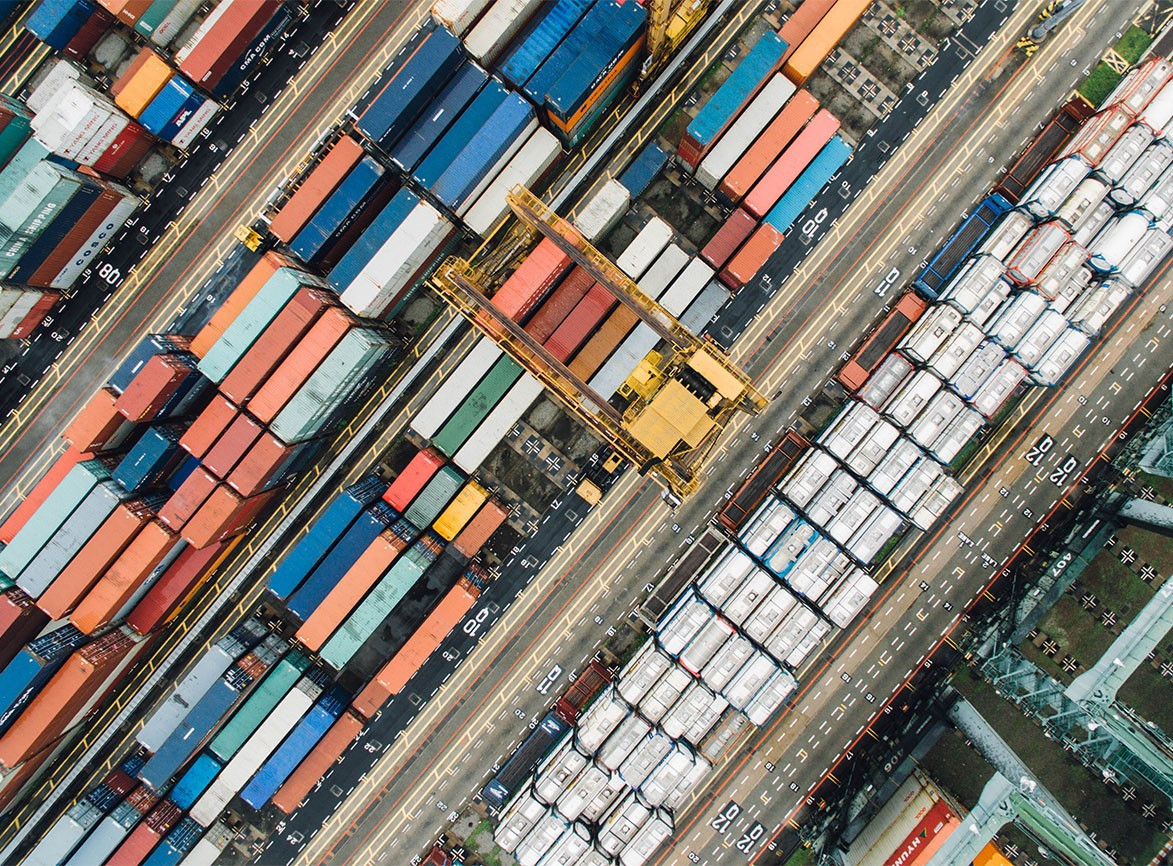
However, at present, specialized inspection services from ministries and sectors has not had any connection, or has not had automatic connection with customs offices. After having result of specialized inspection, enterprises have to print the result or notify customs office that the result is available, then the customs will clear customs. The procedure take much time and clearance costs from enterprises.
Therefore, it is recommended to urgently review the legal provisions related to the list of goods subject to specialized inspection; reduce the proportion of imported consignments requiring specialized inspection at the customs clearance stage to the post-customs clearance stage; quickly amend legal documents that still have problems, shortcomings, or do not facilitate commercial activities. Implementing spcialized inspection on the basis of risk management principles, assessing the level of legal compliance of enterprises. Recognizing and accepting the quality of well-known brands, manufacturers, goods manufactured in countries and regions with high quality standards, such as Europe, America and Japan. Carrying out the socialization of specialized inspection, forming agencies and organizations with function of specialized inspection in all fields at large border gates with a lot of import and export goods to avoid the situation that one product has to go through many specialized inspections from different agencies.
Implementation of trade facilitation projects across the country, as the project “Customs Procedures in Logistics Operations and Fighting against Cargo Congestion at Cat Lai port” - one of the proofs of the effectiveness of the improvement of administrative processes and procedures that will bring great benefits and help reduce logistics costs significantly and develop in other activities. The highlight of the project is that goods are cleared right at the wharf, realizing the goal of reducing 70% of the cargo clearance time, saving costs for businesses and society at an estimated VND 5,000 billion pa. At the same time, it is to improve regional connectivity, increase the circulation of imported and exported goods from Cat Lai port to the belt area and neighboring provinces. Implementation of the project will greatly reduce costs in logistics operations.
Relevant State management agencies such as the Ministry of Planning and Investment, the Ministry of Industry and Trade, and the Ministry of Transport need to officially announce the annual logistics costs of Vietnam, as a tool to help the management and development of the industry. Thereby it also helps public opinion to have a correct view of Vietnam’s logistics costs. In the US, national logistics costs are published annually in the US Government’s Logistics Report.
Singapore’s experience in developing logistics service and cutting costs
Singapore currently is one of countries with LPI of the world’s top, logistics costs compared to GDP of 2020 is 8.5%. It is thanks to Singapore Government has set up and implement a strategy to develop systems of sea ports, air port, and logistics centers; facilitating trade and cross-border transport.
• Focusing on and setting priorities in investment in the development of modern and complete logistics infrastructure works for seaports, airports, expressway systems, and air and sea logistics centers, becoming the world’s center of aviation, maritime and logistics.
• The Government’s commitments in creating facilitating, transparent business environment for the field of logistics.
• Appling modern information technology system to logistics activities as doing direct procedures for vessels entering or going out ports, stevedoring, transport, storing and international connections.
• Encouraging local companies doing JV with large foreign companies for setting up global logistics systems; encouraging multi-national corporations and international logistics providers to set their offices in the countries; assisting logistics companies to create relationship and systems of trade and logistics abroad, as VSIP in Vietnam. There are particular encouraging policies to potential foreign investors in the fields of trade, transport and logistics.
• Going along with the application of high technology is to develop high-quality human resources for transport and logistics. Organizing activities such as granting scholarships and sponsoring logistics research for students, establishing the Asia-Pacific Logistics Institute and developing this academy into Asia’s leading logistics human resource training facility, the Singapore Logistics Research Institute was established to develop logistics training program and strategies. The government has set aside S $ 4.5 million for the training of human resources in logistics for 5 years.
There are lessons to be drawn from above lessons: it is necessary to build a comprehensive, transparent and real legal framework and it is effectively implemented; developing hard and soft logistics infrastructures with the application of high technology; developing a human resource of high quality; promoting foreign and local cooperation and investments; reforming administrative procedures and improving the State’s management role to the logistics service sector with the taking part from the whole society in to logistics service development and competition ability improvements.


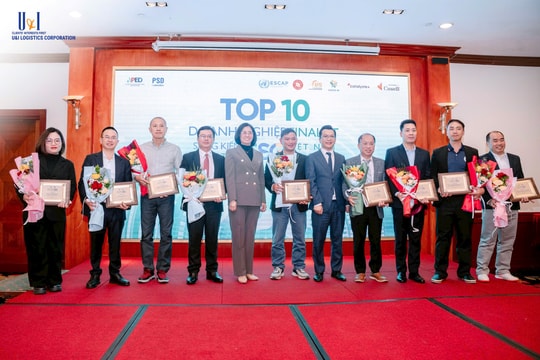
.png)




.png)

.png)


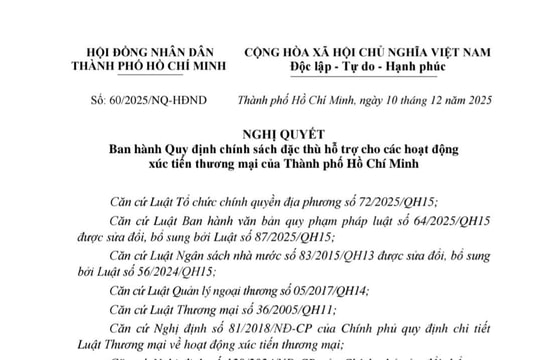
.png)
.png)
